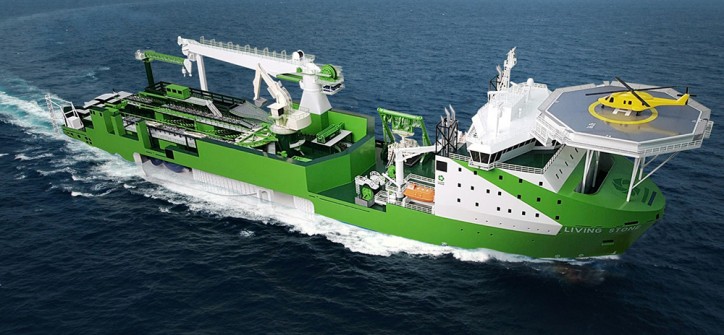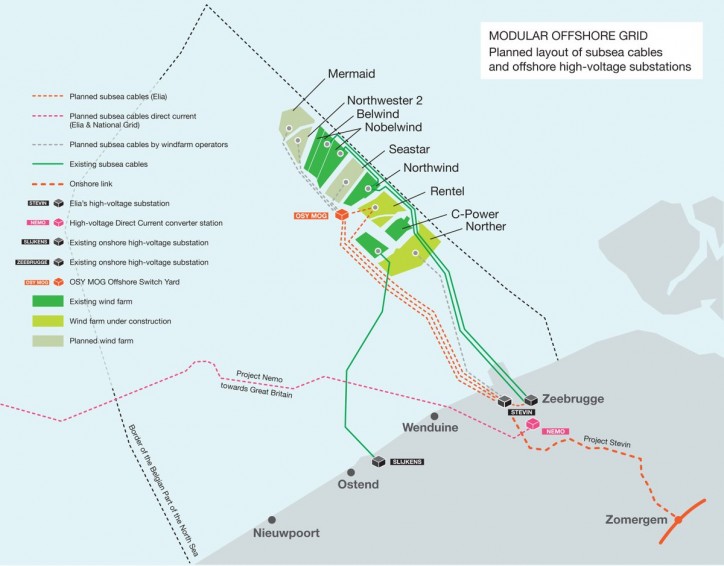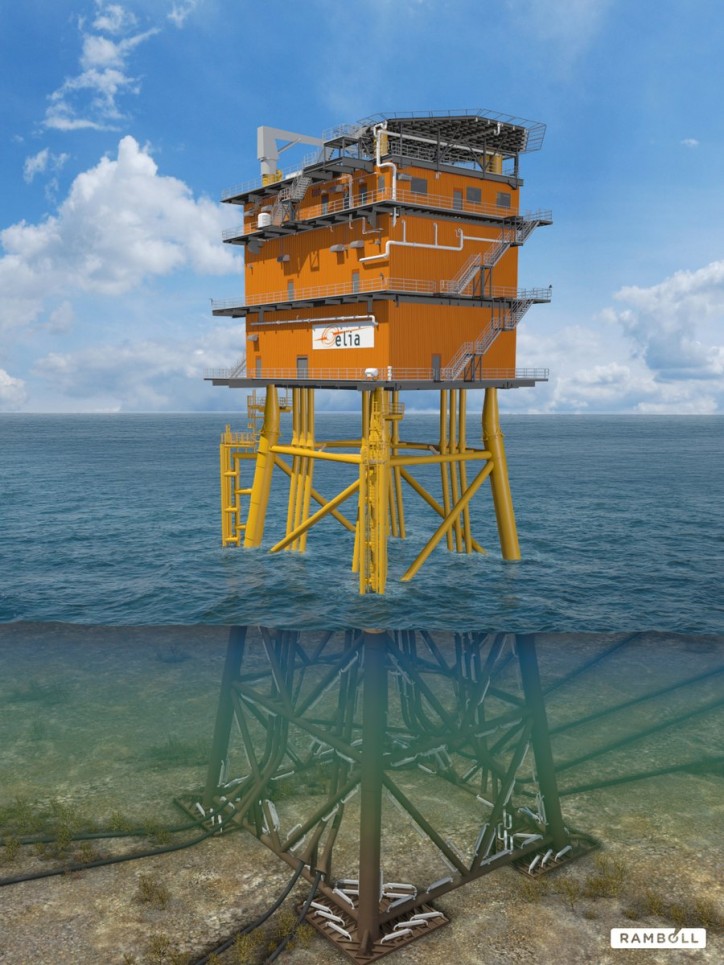Dredging International, part of the DEME Group, has secured the contract from Belgian transmission system operator Elia for the submarine power cable installation for the Modular Offshore Grid (MOG) in the North Sea. DEME will deploy its new fleet of vessels to carry out the works, including hoppers ‘Minerva’ and ‘Scheldt River’ and DP3 cable installation vessel ‘Living Stone’.

Elia’s Modular Offshore Grid, or so-called electricity plug, includes an Offshore Switchyard Platform (OSY) located about 40 kilometres off the Zeebrugge coast, to which four wind farms will be connected. Submarine cables will link the platform with a substation in Belgium, where produced wind energy will be injected in the Belgian onshore grid.
The installation scope includes the supply, installation and maintenance of the submarine power cables. One 220kV power cable will be installed along a 4,5 km route between the Offshore Switchyard Platform and the first windfarm’s platform. Also, two 220kV submarine power cables of approximately 39 km each will be installed from the Offshore Switchyard Platform to the onshore connection point located on the beach in Zeebrugge. The contract has a value of approximately EUR 130 million. Cable will be produced by Hellenic Cables, a Greek manufacturer, as a subcontractor for DEME.

For seabed preparation, DEME will deploy its dual fuel hoppers ‘Minerva’ and ‘Scheldt River’, the newest additions to the fleet and the world’s first LNG powered dredgers. Cables will be installed by multipurpose vessel ‘Living Stone’, entering the DEME fleet in 2017 and operated by Tideway. ‘Living Stone’ features DP3 capability and has been equipped with dual fuel engines with LNG being its prime fuel. Two turntables below deck, each having a 5,000 tons cable capacity, can carry, transport and install more than 200 km of cable in a single trip. By executing the works with this modern fleet of vessels, the environmental impact of the offshore installation works will be kept to the absolute minimum.
The Modular Offshore Grid is scheduled to be taken into use in the third quarter of 2019.

Source: DEME Group